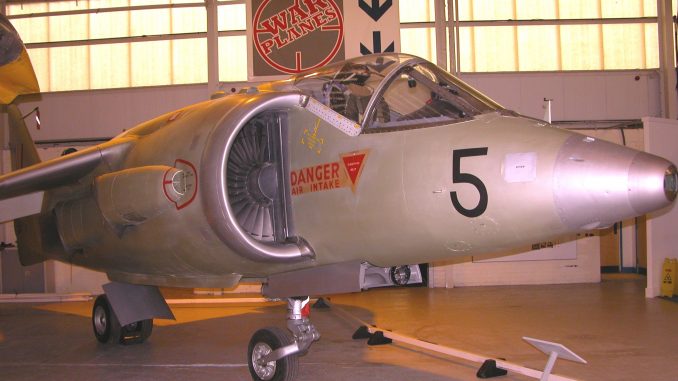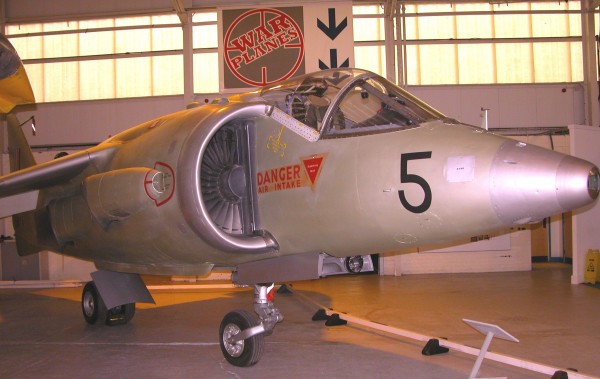

From our friends at the Royal Air Force Museum in the UK comes news that their freshly restored Hawker-Siddeley Kestrel FGA.1 XS695 has gone on display in the Test Flight Collection hangar at RAF Museum Cosford following roughly a year of intensive conservation and restoration work.
The Kestrel was a development of the promising Hawker P.1127 vertical takeoff and landing concept aircraft. It was jointly developed and funded by the British, American and West German governments. Nine aircraft came off the short production line and formed the Tripartite Evaluation Squadron (TES), also referred to as the Kestrel Squadron, based at RAF West Raynham. Here British, West German and American pilots and ground crew evaluated the design in “near-service conditions”. While Germany eventually dropped out of the program, and handed their three jets over to the US; America and Britain agreed to a joint venture which led directly to the superlative Harrier jump-jet, still in service with several military air-arms around the world.
As the RAF Museum press statement describes: “The Kestrel made its maiden flight in February 1965 at Dunsfold. By November that same year XS695 had flown 153 times totalling 70.44 airframe hours of which 51.04 were on trials work including 141 sorties with the TES. During 1966 the aircraft was assessed for its handling characteristics, used for training and even appeared at the Hanover and Farnborough Air Shows. In 1972 it was allocated to the Royal Navy Engineering College at Manadon, Devon and later used for apprentice training and to simulate aircraft handling and flight deck procedures.
After being transported by road to the RAF Museum Cosford in November 2001, the Kestrel remained in storage until late Autumn 2012 when it was moved into the Museum’s award winning Michael Beetham Conservation Centre. After undergoing a full restoration and repaint in its tripartite colours which include tri national roundels and fin flashes, the aircraft has now been placed on display for Museum visitors to enjoy.”
Nick Sturgess, Alex Henshaw Curator at RAF Museum Cosford said:
“We are delighted to finally have the Kestrel out on public display after its time in storage and its extensive restoration. This aircraft is the only surviving example in the UK and represents an important stage in aircraft development. It was used by three nations to evaluate the jump jet concept and wore a unique colour scheme which can now be seen for the first time since 1965. The results from the Kestrel Squadron would be a huge influence in the development of the Harrier. It now sits alongside the Hunting H126 which was also used to experiment with short take off ideas at the same time.”
As an additional note, four other Kestrels survive on display in the United States of America where the type was known as the XV-6A. Several P.1127 airframes also made it into preservation as well.
The RAF Museum is open daily from 10am and admission is free of charge. For more information on the Museum, visit www.rafmuseum.org or call UK 01902 376200. Keep up to date with the latest news and event information by following us on Facebook – Royal Air Force Museum Cosford or on Twitter @RAFMUSEUM.


Be the first to comment
Graphic Design, Branding and Aviation Art